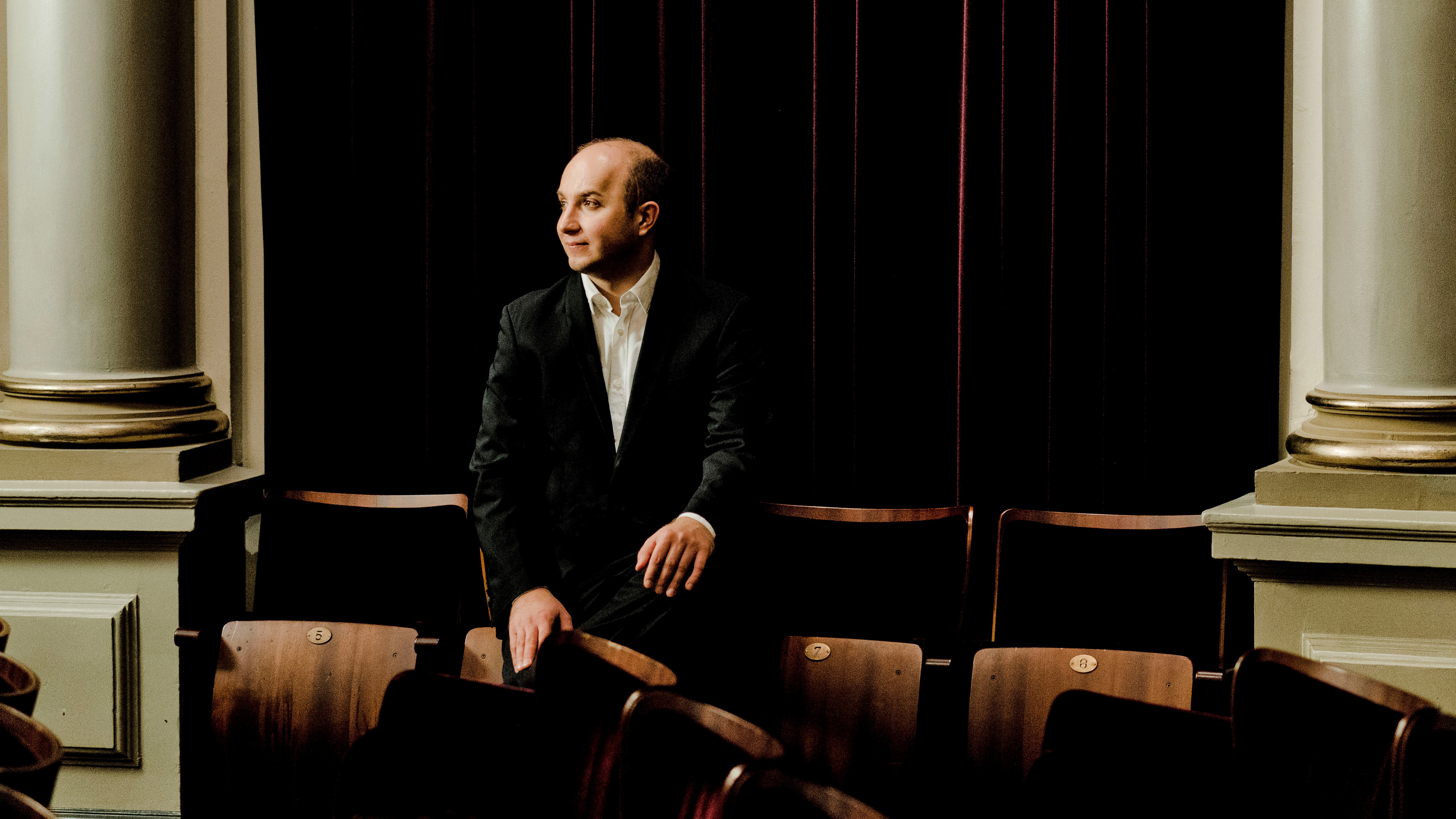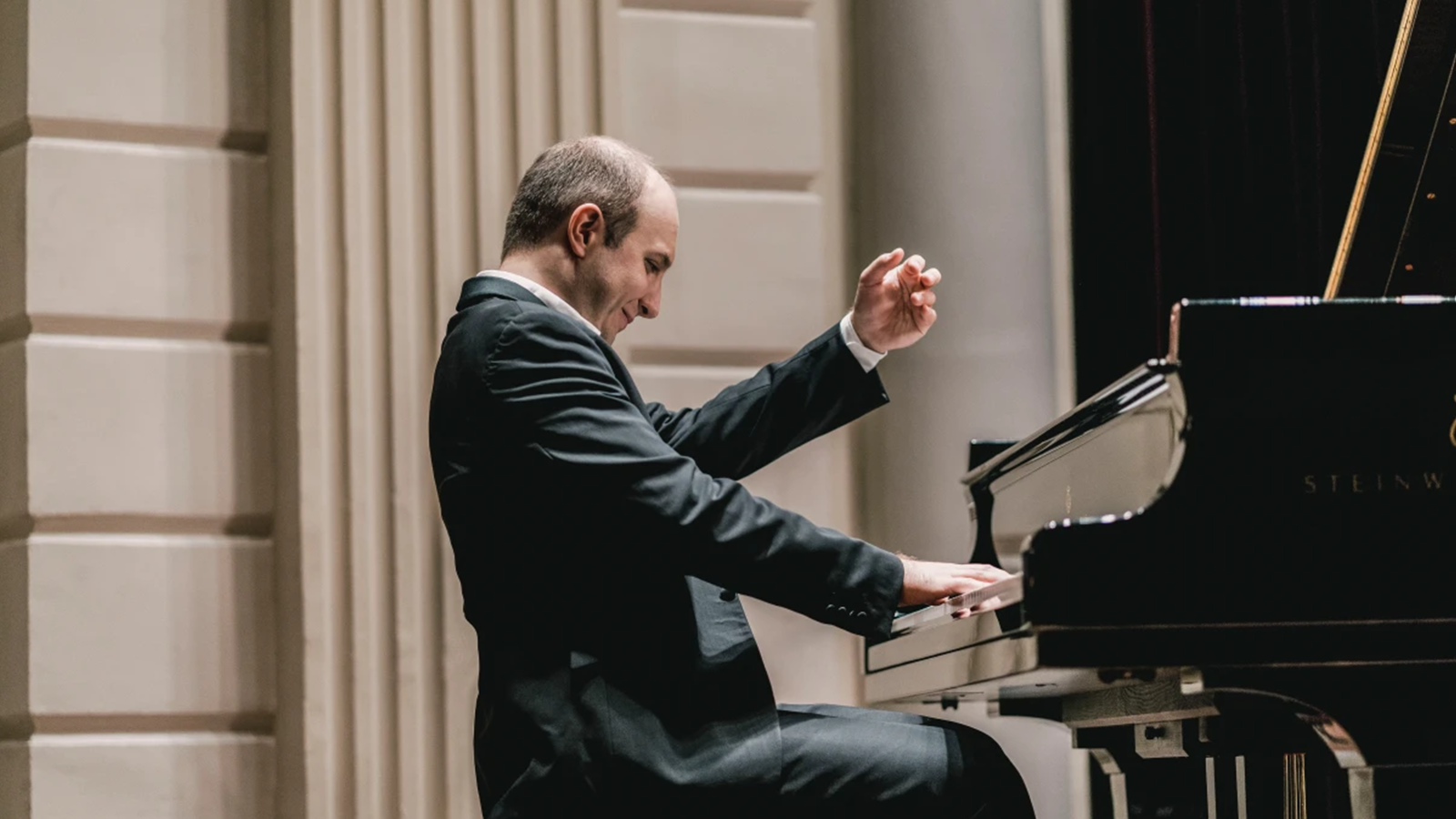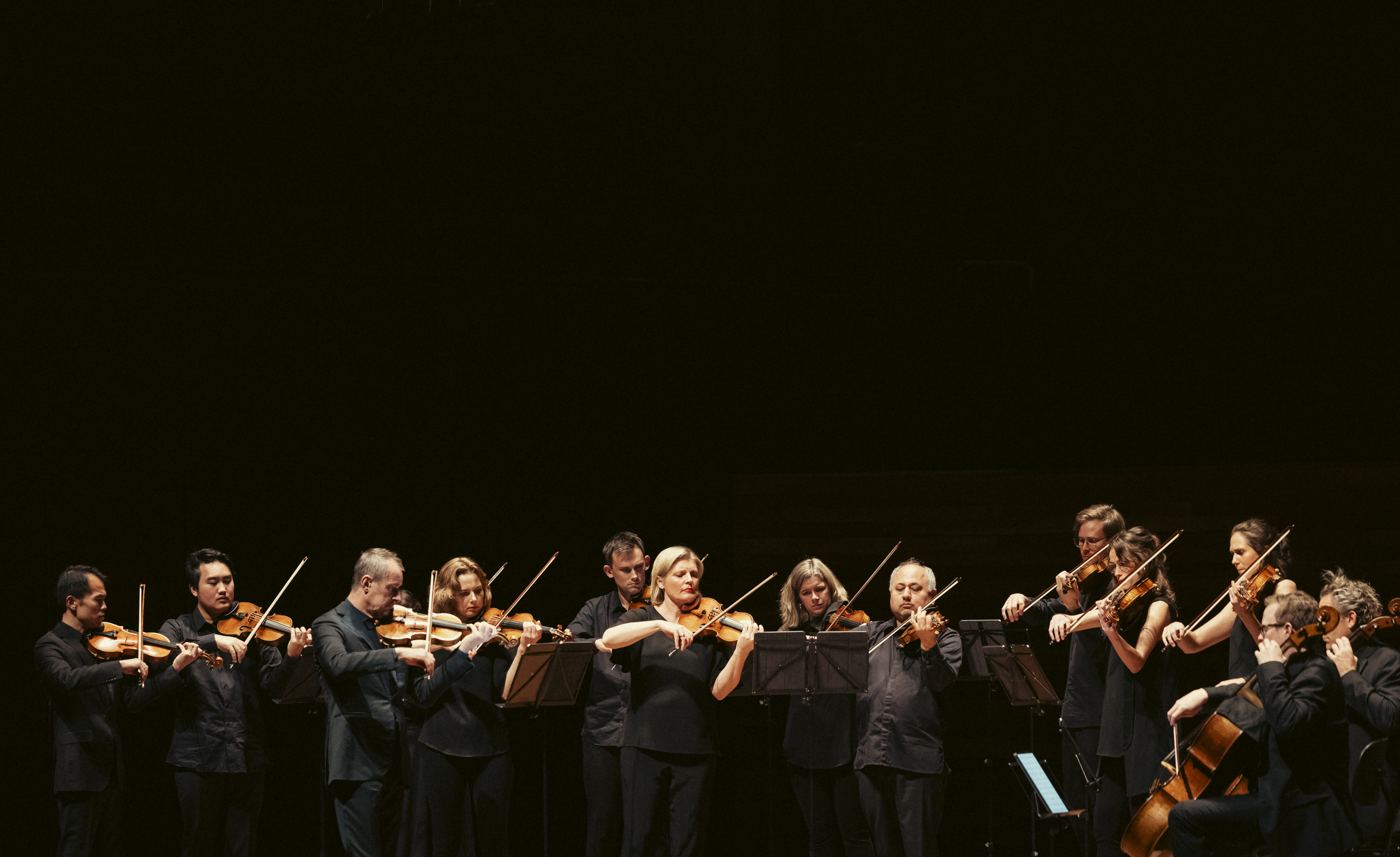
By Marko Pavlyshyn
Born in Kharkiv in 1984, Gavrylyuk came to Australia at the age of 13, six years after Ukraine regained its independence. “My happiest memories from my childhood in Ukraine were from the countryside, spending time with my grandmother,” he reminisced when we spoke. “These were seemingly unassuming but very strong memories of being carefree and completely connected with the environment, with nature and the local folkloric culture – folkloric singing, for example, and accordion playing, which my parents did. These memories are very strong and they enable me to see music in quite specific colours.”
The location of this idyll was a village near the Russian border called Malyzhyne, which, he explained, “has now been destroyed by the occupiers”.
Gavrylyuk is less nostalgic about the beginnings of his musical education in a system still confined within Soviet pedagogical traditions. The “unforgiving Soviet machine” was a “factory that produced virtuosi”, he says. “It followed a military approach to music that crushed individuality and personal expression.” It “melted everyone into an impressive reflection of the system, of the school, of the authority behind it.”
Coming to Australia in his early teens was a watershed for Gavrylyuk. “I started to realise what inner freedom really means, and free choice, free inspiration and a free path. That was a huge transition for me.” This juxtaposition of liberty and stricture is what Gavrylyuk emphasises as he discusses the inclusion, in a single concert program, of works as different as George Gershwin’s Rhapsody in Blue (1924) and Shostakovich’s Piano Concerto No.1 in C minor (1933).
“The rhythm, the spaces between the notes in Gershwin is what creates the music: not the notes, but rather the spaces and the poetry and the energy between the notes,” he says. Gershwin’s Rhapsody is “completely open music, playful, improvisatory, full of possibility and jazz and individuality – which Shostakovich was fighting for all his life: the idea of the individual which was destroyed by the system, and which he kept bringing back in his music.”

Shostakovich’s concerto was written well after his Symphony No.1 (1926), which made him famous, and not long before the opera Lady Macbeth of Mtsensk (1934), which, initially welcomed by Soviet audiences and critics, was disparaged by Stalin. The dictator’s verdict resulted immediately in the composer’s fall from grace, although he was rehabilitated in 1937.
“Shostakovich is full of edge and irony,” says Gavrylyuk. The concerto was written under a regime that demanded conformity. “It is coded language: smiling through clenched teeth and laughing in the face of the fate that was created by the regime. That’s the type of humour that one gets with this music.” The piece is circus-like, Gavrylyuk observes: it is technically challenging, but it also reflects the feats of ideological contortion required of an artist determined to express a yearning for freedom while in thrall to an autocracy.
No less complex in its ambiguity is the other work by Shostakovich that completes the concert: Chamber Symphony in C minor, Op.110a, an adaptation by Shostakovich’s close associate Rudolf Barshai of the composer’s Quartet No.8, Op.110. Shostakovich composed the quartet in Dresden in July 1960. He had been invited to write the music for Lev Arnshtam’s film, Five Days, Five Nights, which was set in that city in the immediate aftermath of World War II. Affected by his visit to Dresden and reflections on the city’s destruction by Allied bombing 15 years earlier and the slaughter and genocide of World War II more generally, he wrote the quartet over three days and dedicated it “in memory of the victims of fascism and war.”
“Gavrylyuk believes in the power of music to address people of the most diverse cultures and backgrounds and sustain them in adversity, to incline them toward virtue and to unite them.”
Later Shostakovich confided in a letter to his friend, the literary critic Isaak Glikman, that he had conceived of the work as a kind of auto-epitaph – a memorial to himself. He had signalled the work’s autobiographical reference, he wrote, by quoting from his earlier works and by including the motif that was his musical cryptogram: D, E flat, C, B natural or, in German musical notation, DSCH: the initial letters of his given name and surname as written in German: Dmitrij Schostakowitsch. Whatever the psychological motivation of Shostakovich’s quartet, the work remains a tribute to victims of war and of totalitarianism, but also to himself as a victim of the system in which he was trapped.
My conversation with Gavrylyuk returns to the topic of the current war. “Ukraine is fighting for its identity, for its sovereignty, its dignity and ultimately for its right to exist on its own terms,” the virtuoso says. “In a way, that was the struggle I was referring to when I spoke about individuality – about how Shostakovich promotes this idea in the face of suppression. I’m in awe of the musicians in Ukraine – the musicians and artists who continue to produce art and to play, showing incredible resilience; those sounds and those expressions of art are really acts of resilience. I’m reminded of Shostakovich gathering audiences in [besieged] Leningrad. Now Ukrainians are doing the same in concert halls in defiance of Russian aggression. Which is darkly ironic.”
Gavrylyuk believes in the power of music to address people of the most diverse cultures and backgrounds and sustain them in adversity, to incline them toward virtue and to unite them. The task of the musician, he says, is to become the selfless intermediary who enables music to perform its ennobling and uplifting mission. “I try to dissolve in the natural breath and heartbeat of the music. I try to erase myself, but still to be present in order to be the connecting point between the musical idea and the audience – the binding force, so to speak. … I get the same kind of return energy from audiences of every culture, every religion, every form of thought. … I think [music] is the strongest diplomatic tool we have.”
Gershwin & Shostakovich tours to Sydney, Newcastle, Canberra, Melbourne, Adelaide, Perth, Wollongong, Brisbane. Click here to buy tickets.
Marko Pavlyshyn is an Emeritus Professor of Ukrainian Studies at Monash University, where he had charge of the Ukrainian language and culture program from 1983 to 2019. His scholarly specialisation is modern and contemporary Ukrainian literature. His publications include the Cambridge Element Ukrainian Literature: A Wartime Guide for Anglophone Readers (2025), the books Literature, Nation and Modernity (2013), Olha Kobylianska: Interpretations (2008) and Canon and Iconostasis (1997) and many scholarly articles and chapters. He is a Fellow of the Australian Academy of the Humanities and an International Member of the National Academy of Sciences of Ukraine.
